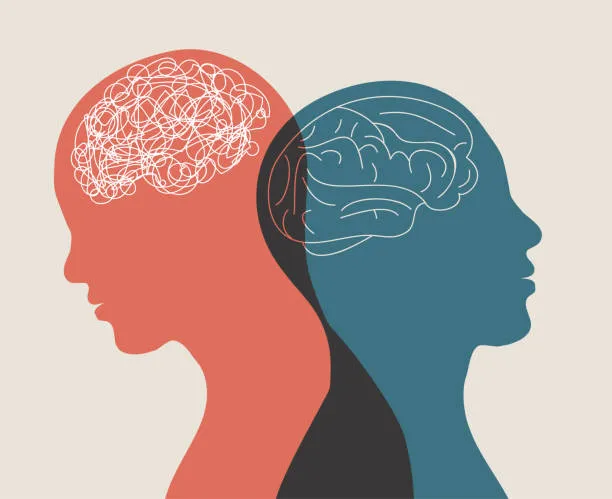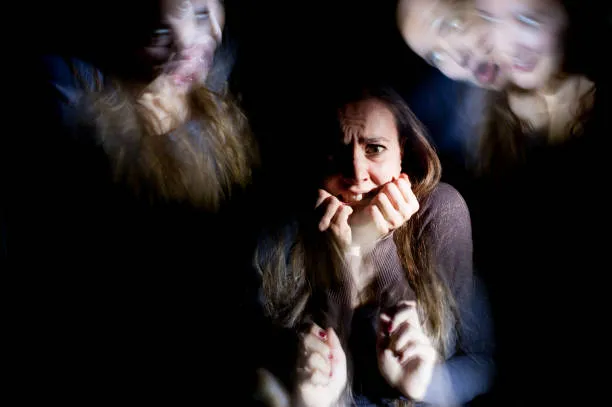What is mental health?
Mental health refers to a person's state of mental well-being. The quality of a person's mental health is often measured by the adaptability with which they can cope with stressors on a daily basis.
Mental health enables people to use their abilities, be productive, make decisions, and play an active role in their communities.
Poor mental health is often confused with mental illness.
Mental illness, also known as mental health disorders, refers to a broad range of mental health conditions, disorders that affect your mood, thinking, and behavior.
Symptoms
The signs and symptoms of mental illness can vary depending on the disorder, circumstances, and other factors. Symptoms of mental illness can affect emotions, thoughts, and behavior.Examples of signs and symptoms include:
• Sadness or depression
• Confused thinking or reduced ability to concentrate
• Excessive anxiety or worry or extreme guilt
• Extreme mood swings with ups and downs
• Withdrawal from friends and activities
• Significant tiredness, lack of energy or trouble sleeping
• Disengagement from reality (delusions), paranoia, or hallucinations
• Inability to cope with daily problems or stress
• Understanding and relating to problems, situations and people
• Problems with alcohol or drug use
• Significant changes in eating habits
• Changes in sexual desire
• Excessive anger, hostility, or violence
• Suicidal thoughts
Common mental disorders
The most common types of mental illness are the following:
• Anxiety disorders
• Mood disorders Gen
• Schizophrenia Disorders
Anxiety Disorders
People with these disorders have intense fear or anxiety that tests certain objects or situations. Most people with an anxiety disorder will try to avoid anything that triggers their anxiety.
Examples of anxiety disorders are: Generalized Anxiety Disorder, Phobias, Post-Traumatic Stress Disorder,
Generalized anxiety disorder (GAD)
GAD was defined by the American Psychiatric Association as disproportionate worry that interferes with daily living.
Physical symptoms may also occur, including
• restlessness
• fatigue
• muscle tension
• trouble sleeping
An episode of anxiety symptoms in people with GAD does not necessarily have a specific trigger.
They may experience excessive anxiety when confronted with everyday situations that do not pose an immediate threat, such as doing housework or going to appointments. A person with GAD can sometimes experience anxiety without a trigger.
Panic Disorders
People with panic disorder regularly experience panic attacks accompanied by sudden and overwhelming terror or a sense of doom and impending doom.
Phobias
There are different types of phobias:
• Simple phobias: They may involve an unreasonable fear of certain objects, scenes or animals. The fear of spiders is a common example. Learn more about simple phobias here.
• Social phobia: Sometimes known as social anxiety, it is the fear of being subjected to the judgment of others. People with social phobia often limit their exposure to social environments. Learn more here.
• Agoraphobia: This term refers to the fear of situations from which escape might be difficult, such as fear in an elevator or on a moving train. Many people misinterpret this phobia as a fear of being outside.
phobias are deeply personal, and doctors don't know all types. There can be thousands of phobias, and what may seem unusual to one may be a serious problem that dominates another's day-to-day life.
Obsessive-Compulsive Disorder (OCD)
People with OCD have obsessive-compulsive thoughts and compulsions. In other words, they constantly experience stressful thoughts and a strong urge to perform repetitive actions like washing their hands.
Post-Traumatic Stress Disorder (PTSD)
PTSD can occur after a person has experienced or witnessed a deeply stressful or traumatic event. In such events, the person thinks that their life or that of other people is in danger. They may be afraid or that they have no control over what is happening.
These feelings of trauma and fear can contribute to PTSD.
Mental Disorders
People may also refer to mood disorders as mood disorders or depressive disorders. People with these disorders have significant mood swings, usually accompanied by mania, a period of high energy, and euphoria or depression. Examples of mood disorders include:
• Major Depressive Disorder: A person with major depressive disorder experiences persistent depression and loses interest in previously enjoyable activities and events. You may experience prolonged periods of sadness or extreme sadness.
• Bipolar Disorder: A person with bipolar disorder experiences unusual changes in their mood, energy levels, activity levels, and ability to go on with daily life.Periods of good mood are called manic periods, while periods of depression cause depression.
• Seasonal Affective Disorder (SAD)
. Schizophrenic Disorders
Psychiatric authorities are still trying to determine whether schizophrenia is a single disorder or a group of related diseases. It's a very complex condition. The person will have thoughts that appear fragmented and may also have difficulty processing informatio.
Positive symptoms of schizophrenic Disorders are delusions, thought disorders and hallucinations. Withdrawal, lack of motivation, and a flat or inappropriate mood are the negative symptoms of schizophrenic disorder
Treatments may include:
Psychotherapy or Talk Therapy, Cognitive behavioral therapy, exposure therapy, and dialectical behavioral therapy are examples.
This type of treatment is carried out by psychiatrists, psychologists, psychotherapists and some general practitioners.can help people understand the root of their mental illness and work on healthier thought patterns that support everyday life and reduce the risk of isolation and self-harm.
Medications
Some people take prescription medications such as antidepressants, antipsychotics, and anti-anxiety medications. Although there is no cure for these mental disorders, some medications can improve symptoms and help a person resume social interactions and a normal routine while working on their mental health.
Some of these drugs work by increasing the body's absorption of beneficial brain chemicals like serotonin. Other drugs increase the overall levels of these chemicals or prevent their breakdown or destruction.
The point is your mental health is as important as your physical health if not more, pay attention to it for the sake of your wellbeing .
Thanks for reading, sayonara 🖐
References/Resources
Reference 1
Reference 2
Reference 3
Reference 4
Reference 5
Reference 6
Reference 7




